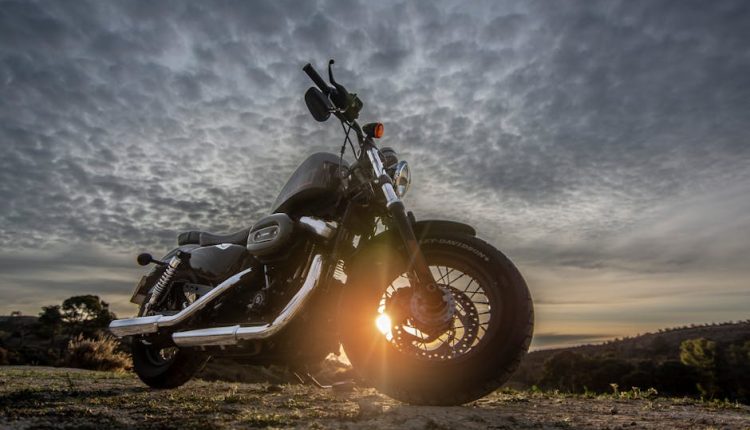UK Motorcyclists Shouldn’t Forget Mini Tyre Pumps: Look Out For These Features
Key Takeaways
- Proper tyre pressure maintenance reduces accident risks and extends tyre lifespan, contributing to significant savings on fuel and tyre replacement costs.
- Key mini tyre pump features include 100+ PSI output capacity, multiple power sources, automatic shut-off technology, and built-in LED lighting.
- Manual pumps require significant physical effort and lack the precision needed for accurate pressure readings.
- Regular pressure checks should be performed weekly on cold tyres following vehicle guidelines.
- Investing in a quality portable tyre pump provides roadside peace of mind and prevents costly breakdown situations.
Every UK motorcyclist knows that feeling of uncertainty when heading out on a long ride – will the tyres hold up? While many riders focus on engine maintenance and protective gear, tyre pressure often gets overlooked until it becomes a roadside emergency. The truth is, maintaining proper tyre pressure could well help you survive on Britain’s challenging roads.
Proper Tyre Pressure Saves Lives and Money
Maintaining correct motorcycle tyre pressure is vital for safe handling, as under-inflated tyres cause excessive flexing, casing deterioration, and rapid tread wear. Over-inflation leads to uncomfortable rides and reduced road contact, compromising your ability to navigate safely through wet conditions or emergency manoeuvres.
The financial impact? Enormous. Under-inflated tyres can reduce fuel efficiency by up to 10% and cause premature wear patterns that require earlier replacement. When quality motorcycle tyres cost £200-400 per pair, proper maintenance couldn’t be more vital for protecting your investment.
UK regulations require motorcycles over 50cc to maintain a minimum tread depth of 1mm across ¾ of the tread width and with visible tread on the remaining ¼ – but proper inflation ensures even wear distribution. is crucial if you want to maintain these standards consistently.
Key Features in Mini Tyre Pumps
Not all portable tyre pumps meet the demanding requirements of motorcycle riders. Understanding which features matter most can make all the difference between reliable roadside assistance and frustrating equipment failure when needed most.
1. Minimum 100 PSI Output Capacity
Motorcycle tyres typically require 28-40 PSI, though always refer to your motorcycle’s owner’s manual or the sticker on the swingarm for the manufacturer’s recommended pressure. Having an inflator capable of at least 100 PSI provides the versatility you need. Touring bikes carrying passengers or luggage often need higher pressures, and sport bikes may require precise adjustments for track days or spirited rides through the countryside.
Higher PSI capacity also enables use with car tyres, bicycle tyres, and sports equipment, making your investment more valuable. Some devices can inflate motorcycle tyres in approximately 2 minutes whilst maintaining a consistent pressure output.
2. Multiple Power Source Options
Reliability demands backup power options. Quality mini tyre pumps offer both rechargeable battery operation and 12V vehicle adapter compatibility. This dual-power approach ensures functionality whether parked at home, stopped at a motorway service area, or stranded on a remote country lane.
Ideally, look for devices that provide the power for multiple inflation cycles whilst maintaining portability. USB charging capability adds another layer of convenience for modern riders who carry power banks or have charging ports on their bikes.
3. Automatic Shut-Off Technology
Precision matters when inflating motorcycle tyres, as over-inflation can be as dangerous as under-inflation. Automatic shut-off technology with preset pressure settings eliminates guesswork and prevents costly mistakes. With some products, you can preselect pressure levels – automatically stopping inflation when the target is reached.
This feature is invaluable during roadside repairs when stress levels run high and visibility might be poor. Instead of constantly monitoring gauges, you can set your desired pressure and focus on traffic safety whilst the pump does its work.
4. Built-In LED Lighting
British weather and shorter winter days mean many tyre issues occur in low-light conditions. Built-in LED lighting can turn a stressful nighttime breakdown into a manageable situation. Quality units provide both bright work lights for illuminating the tyre valve and emergency flashers for visibility to passing traffic.
Some advanced models include SOS light patterns that can signal for help during serious emergencies. This dual-purpose lighting system is practically light as a feather – all while significantly improving safety during roadside repairs.
Why Manual Pumps Fall Short
Traditional hand pumps might seem like a lightweight, reliable option, but their limitations become all too apparent in the real world – especially if you need quick, accurate inflation.
Time and Effort Requirements
Manual pumps require substantial physical effort to reach motorcycle tyre pressures. After a long ride or during poor weather conditions, the last thing any rider wants is an exhausting pumping session! And wearing protective gear only makes it more tyre-ing, no pun intended.
Time is of the essence during roadside emergencies, especially on busy motorways where lingering increases accident risks. Electric pumps complete inflation in 2-3 minutes versus 10-15 minutes of manual labour, allowing riders to return to safe riding conditions quickly.
Accuracy Limitations
Manual pumps often lack precise pressure gauges, making it difficult to achieve exact specifications. Motorcycle tyres require specific pressures for optimal performance, and approximations can compromise handling characteristics or cause premature wear.
Digital displays on electric pumps provide real-time pressure readings with accuracy typically within a few PSI. This precision is crucial when carrying varying loads that require pressure adjustments.
Understanding Your Motorcycle’s Recommended Tyre Pressure
Proper tyre maintenance begins with understanding your specific motorcycle’s requirements, which vary significantly between models, riding conditions, and load configurations.
Regular Pressure Checks
Checking tyre pressure weekly is advised by motorcycle safety experts, ensuring optimal performance and early detection of slow leaks. Tyres naturally lose air pressure over time, typically around 1-3 PSI per month through normal permeation, and temperature changes can cause additional fluctuations.
Establishing a routine check schedule, preferably before longer rides, helps identify gradual pressure loss before it becomes dangerous. Many riders integrate pressure checks with their pre-ride safety inspections, creating a thorough maintenance habit.
Cold Tyre Readings
Accurate pressure measurements require cold tyres, as riding generates heat that increases pressure readings. Measurements should be taken before riding or after the motorcycle has been stationary for at least three hours.
This principle is particularly important during seasonal transitions when ambient temperature changes affect baseline pressures. Spring and autumn require more frequent monitoring as daily temperature swings can cause significant pressure variations.
Don’t Risk Being Stranded – Invest in Portable Peace of Mind
The cost of a quality mini tyre pump pales in comparison to the expense and inconvenience of roadside assistance calls or replacement tyres damaged by riding on incorrect pressures. Modern portable pumps combine reliability, speed, and precision in packages small enough to fit in motorcycle storage compartments.
Beyond emergency situations, regular access to proper inflation equipment encourages consistent maintenance habits that extend tyre life and improve riding safety. The confidence that comes from knowing you can handle pressure issues independently improves the freedom that draws many to motorcycling.
There are all kinds of scenarios where having immediate access to inflation capabilities would prove invaluable: discovering low pressure before a planned ride, adjusting pressures for different load conditions, or helping fellow riders experiencing difficulties. Quality mini tyre pumps can save the day, so don’t be without one.
For reliable, professional-grade tyre inflation solutions that meet the demanding needs of UK motorcyclists, look into automotive maintenance equipment designed for modern drivers and riders.



Comments are closed.